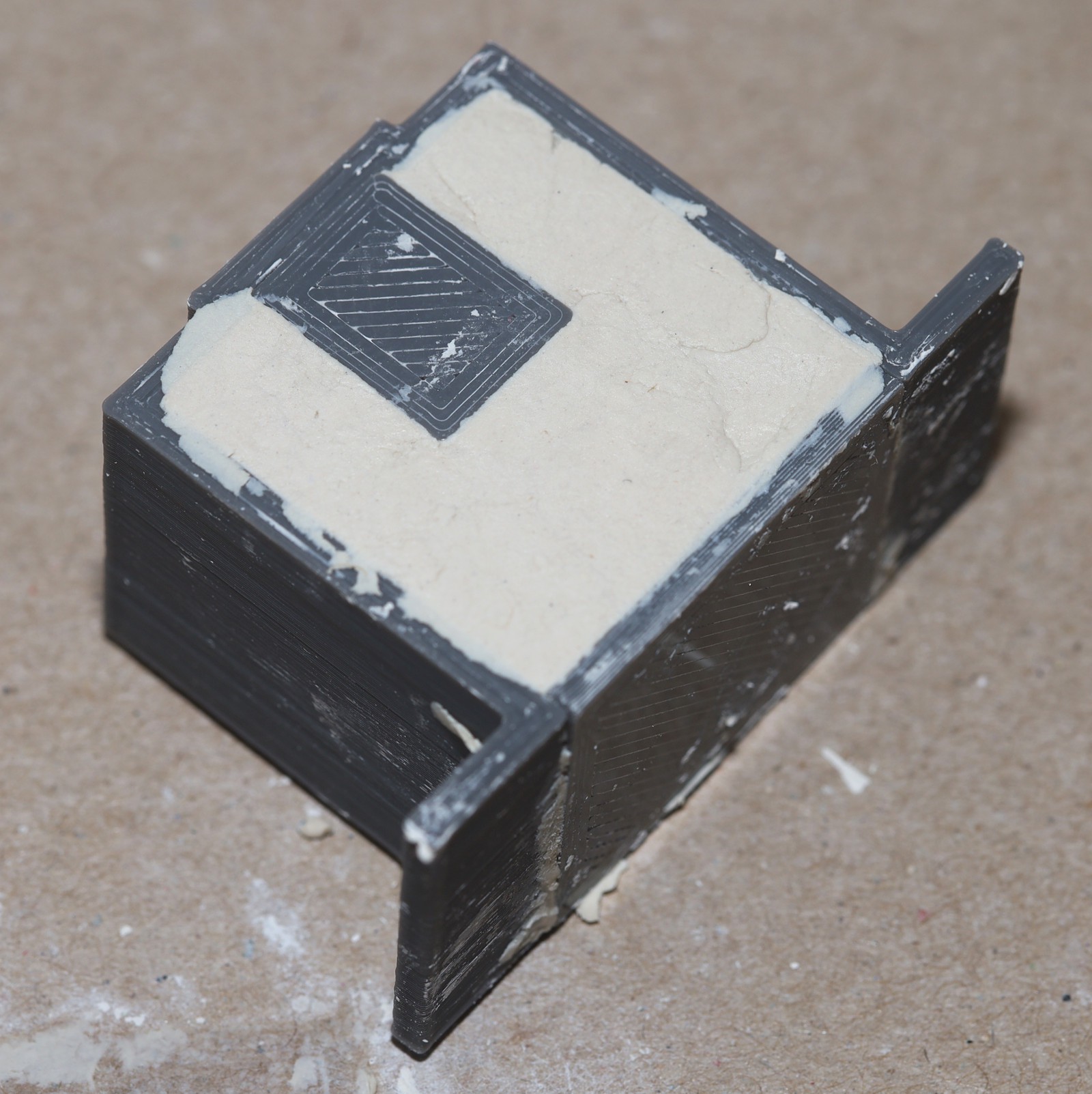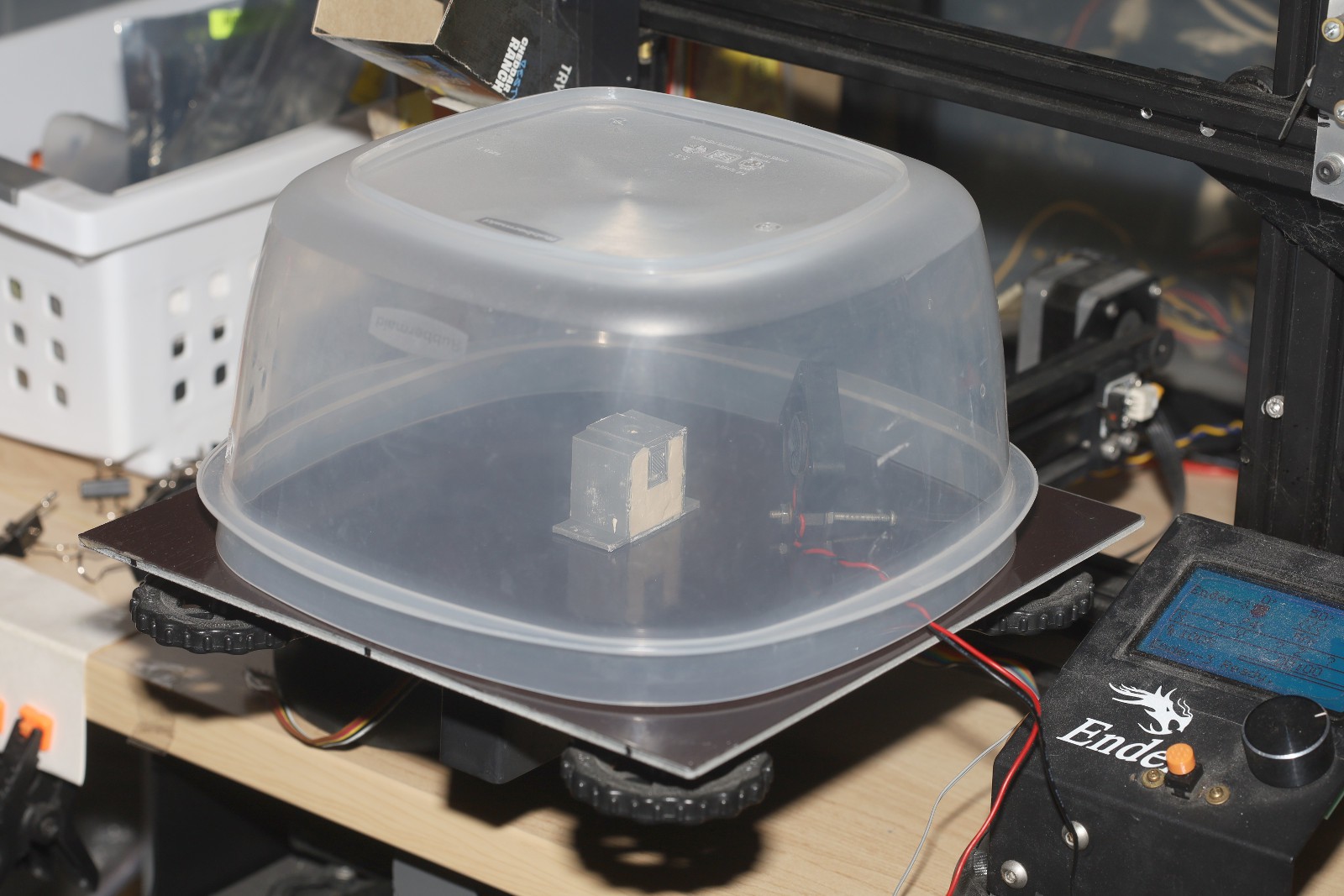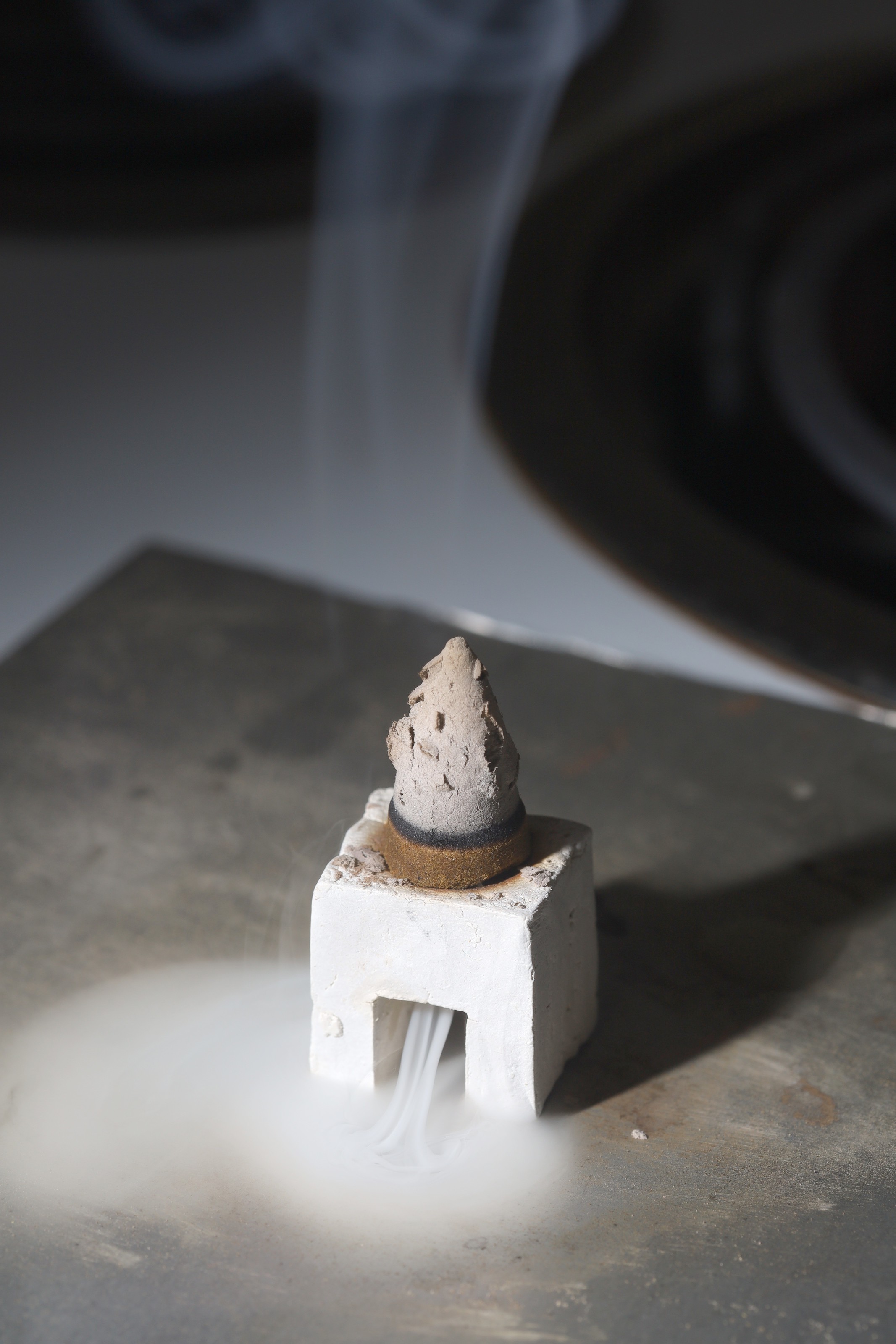




An attempt was made at a multi part PLA mold for a stool. The clay actually holds the mold together so it doesn't need a lot of PLA. After failing to dry at all on the print bed, the decision was made to sacrifice the PLA in the oven. The clay shrank when it dried & locked into the PLA. The PLA had to be melted anyways to get it off. Noted modelers freeze the clay to harden it in the mold & then take the mold off with it frozen. Then the released clay dries outside the mold over 24 hours.

Lions find the blistered appearance of backflow incense cones to be unsettling. Presumably, this happens because of the way the backflow hole was created. 1 theory is the hole compresses the incense, which creates tension on the outer surface. The stool could be slightly taller, with an arch replacing the right angles in the legs.
Continued experiments with air drying clay showed it crumbles in the paw. It's not suitable for anything but a puck. The internet might be using something more expensive than Crayola brand to get away with pots & sculptures. It might be stronger if it dries at room temperature over many days.
There's nothing at all about making air dried clay strong or designing molds. The absence of information is odd for something which was around 4000 years ago.
The lion kingdom has desperately wanted a likeness of thermal tiles, but SpaceX has managed to charge $175 for a very boring butane torch with no details of any kind. Modeling the thermal tiles would be very labor intensive. The cylindrical sections could be scripted but the nose would require manually placing every tile. No matter what, the printer can't print every real tile. It has to be a likeness. Some ideas are just modeling the cylindrical section, procedurally modelling the nose section, manually placing every nose tile. The journey begins by just determining the dimensions of the 3D printed tile.
 lion mclionhead
lion mclionhead
Discussions
Become a Hackaday.io Member
Create an account to leave a comment. Already have an account? Log In.